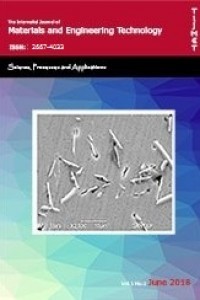ANALYSIS OF WIND TURBINE BLADE PITCH ANGLE CONTROL WITH FUZZY LOGIC
ANALYSIS OF WIND TURBINE BLADE PITCH ANGLE CONTROL WITH FUZZY LOGIC
fuzzy logic system wind turbine, pitch angle,
___
- [1] S. A. Raza, “Smart pitch control strategy for wind generation system using doubly fed induction generator”, King Fahd University of Petroleum and Minerals (Saudi Arabia), 2012.; Publication Number: AAT 1533727; ISBN: 9781267919601; Source: Masters Abstracts International, Volume: 51-05.; 168 p.
- [2] F. D. Bianchi, R. J. Mantz, ve H. De Battista, Ed., “Introduction”, içinde Wind Turbine Control Systems: Principles, Modelling and Gain Scheduling Design, London: Springer, 2007, ss. 1-6. doi: 10.1007/1-84628-493-7_1.
- [3] Z. Shahan, “History of Wind Turbines”, Renewable Energy World, Kas. 21, 2014. https://www.renewableenergyworld.com/storage/history-of-wind-turbines/ (erişim Eki. 08
- Yayın Aralığı: Yılda 2 Sayı
- Başlangıç: 2018
- Yayıncı: Necip Fazıl YILMAZ
INVESTIGATION OF THE HUB DIAMETER EFFECT ON PROPELLER THRUST
Enes COŞKUN, Mehmet Hanifi DOĞRU
EFFECT OF DIFFERENT AMOUNTS OF CARBON FIBER ADDITIVE ABS ON THERMAL DISTORTION AND COOLING TIME
Ömer EYERCİOĞLU, Engin TEK, Mehmet ALADAĞ, Gülağa TAŞ
ANALYSIS OF WIND TURBINE BLADE PITCH ANGLE CONTROL WITH FUZZY LOGIC
Doğan ACAR, Salim Levent AKTUĞ, Kemal KORKMAZ, Salih DURDU, Ömer Necati CORA
ANALYSIS OF MECHANICAL BEHAVIOR OF TERMOPLASTIC COMPOSITES
Ali Taner KUZU, Elifnur KÖSEMEN, Aysu Hande YÜCEL, Mustafa BAKKAL
Nasır MOHAMMED TAHIR, Adamu Umar ALHAJİ, Ibrahim ABDULLAHİ
EFFECT OF PROPELLERS NUMBERS AND HORIZONTAL DISTANCE IN DESIGN OF VTOL
Mustafa VARKİ, Eyüp YETER, Mehmet Hanifi DOĞRU
Mahmut Furkan KALKAN, Murat ARTAN, Hasan Mithat DELİBAŞ, Abdulcabbar YAVUZ, Necip Fazıl YILMAZ
